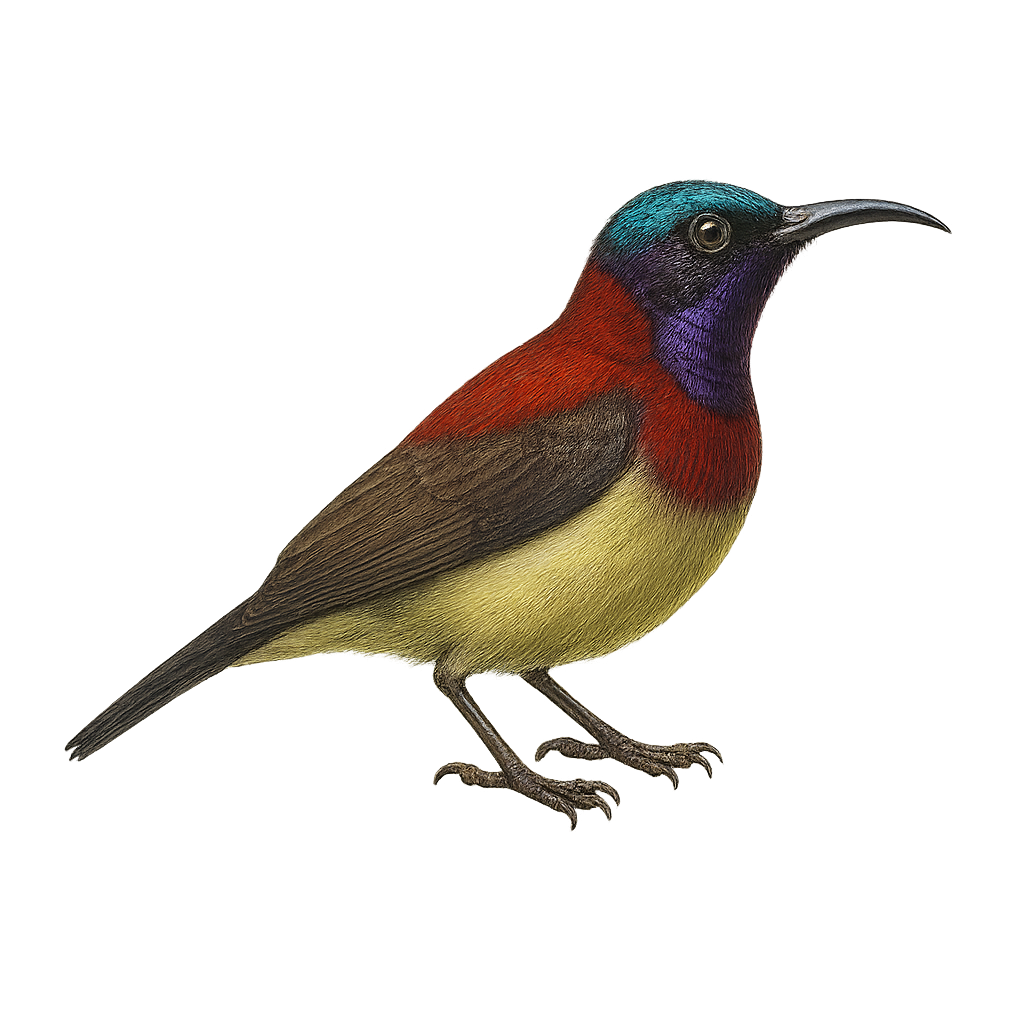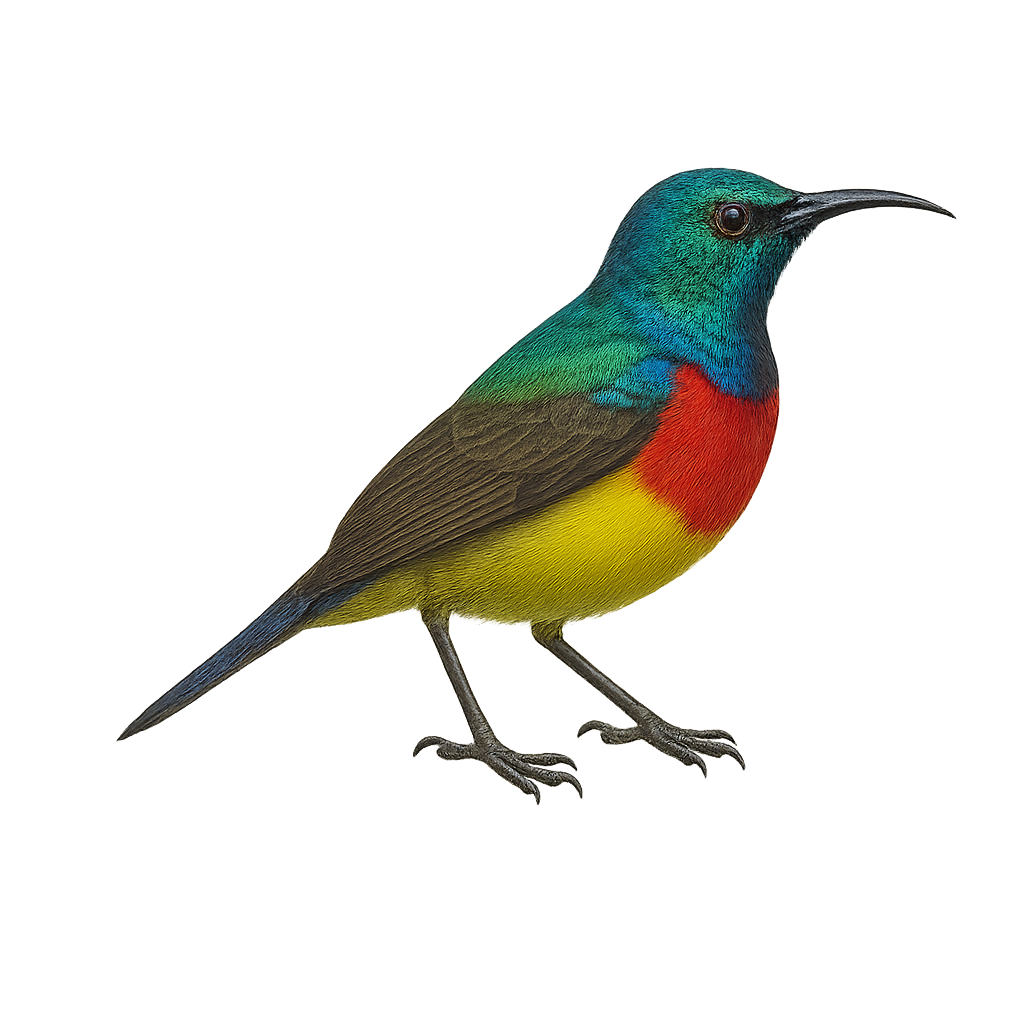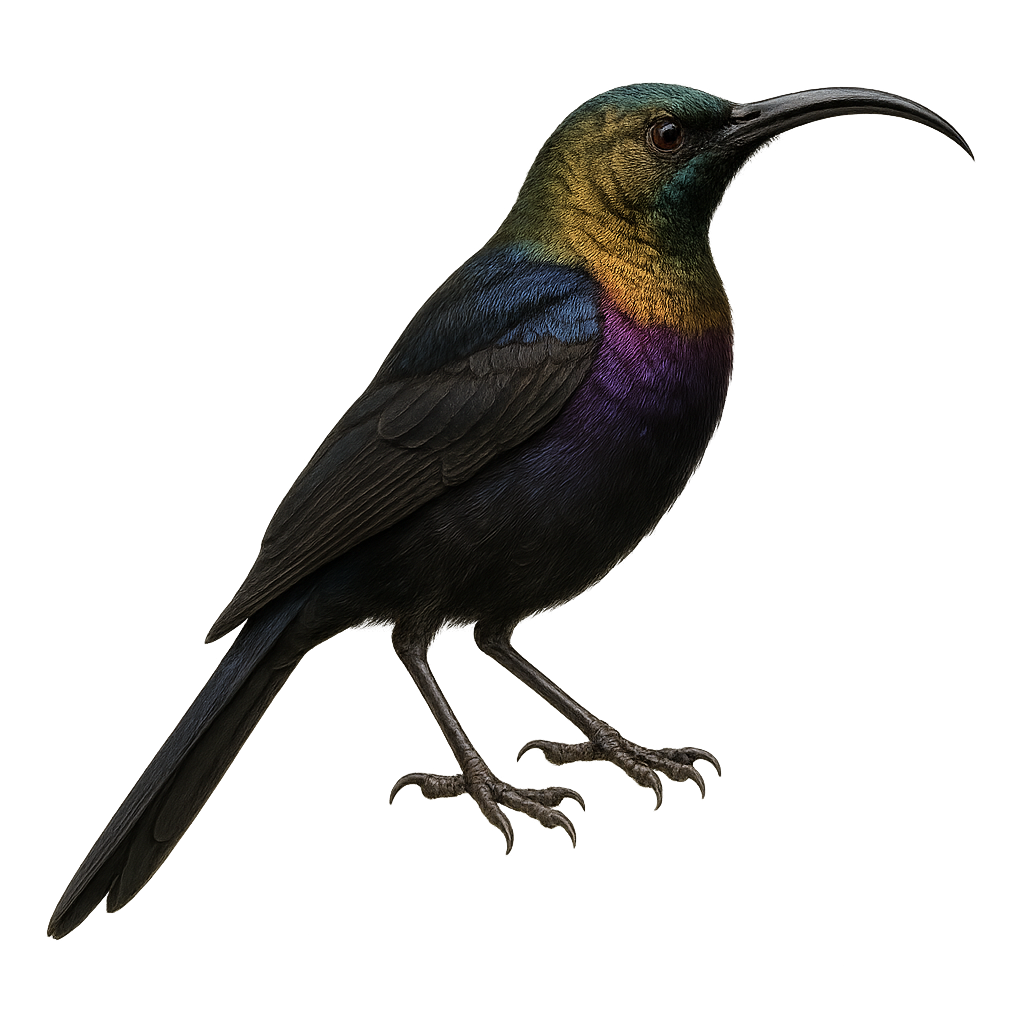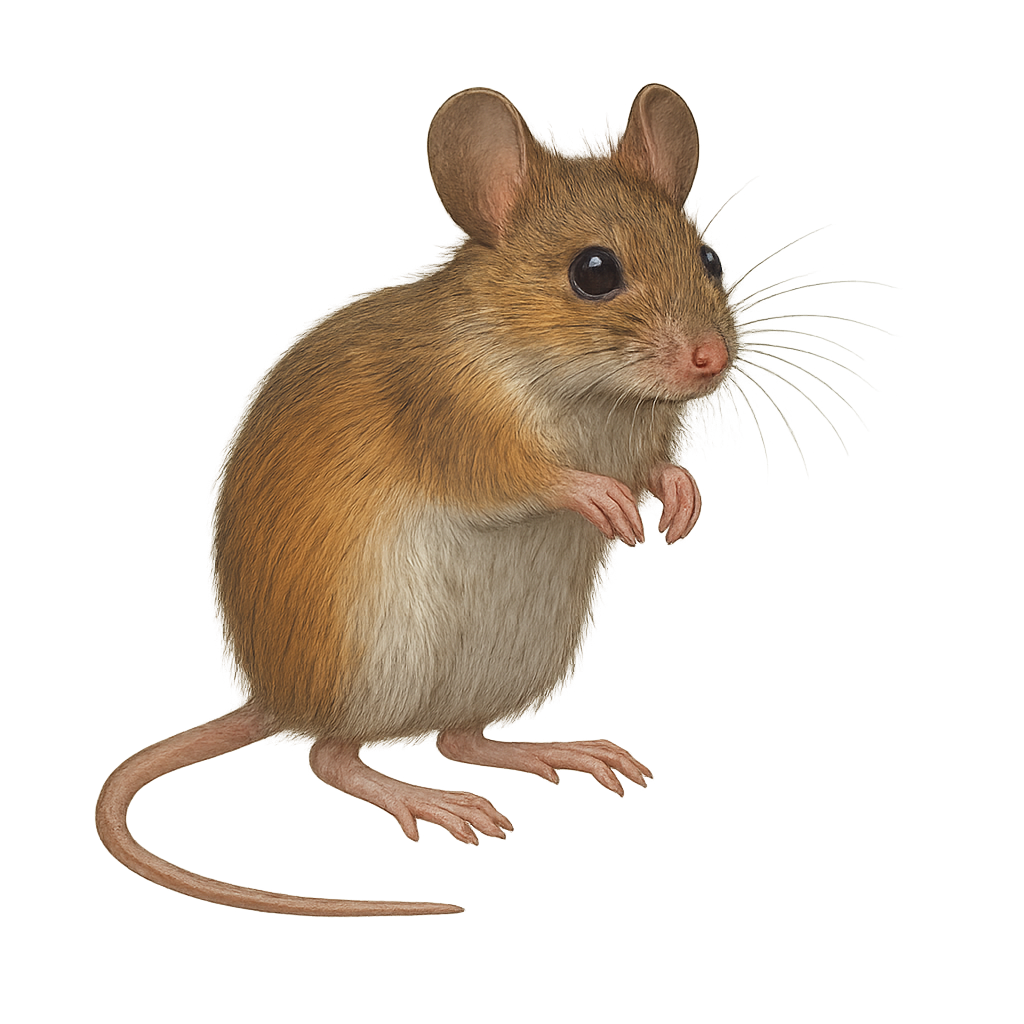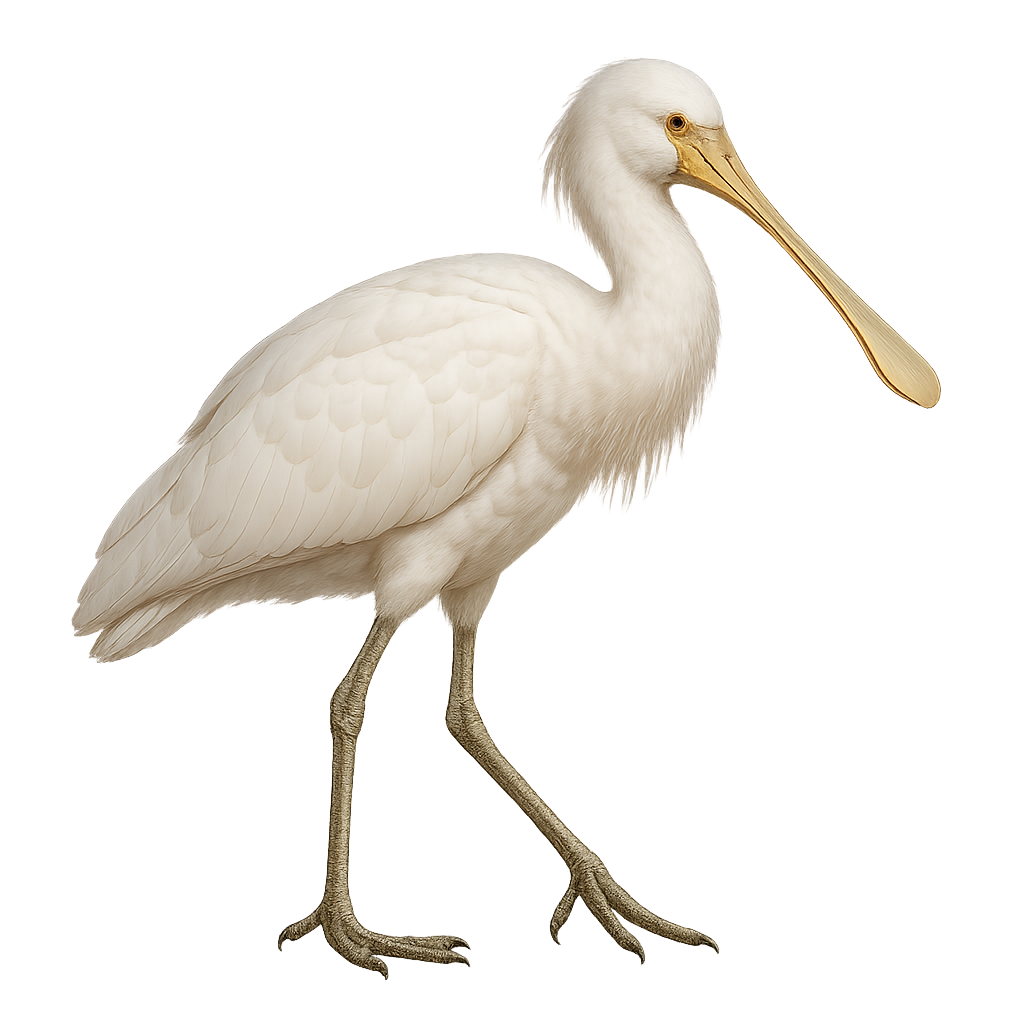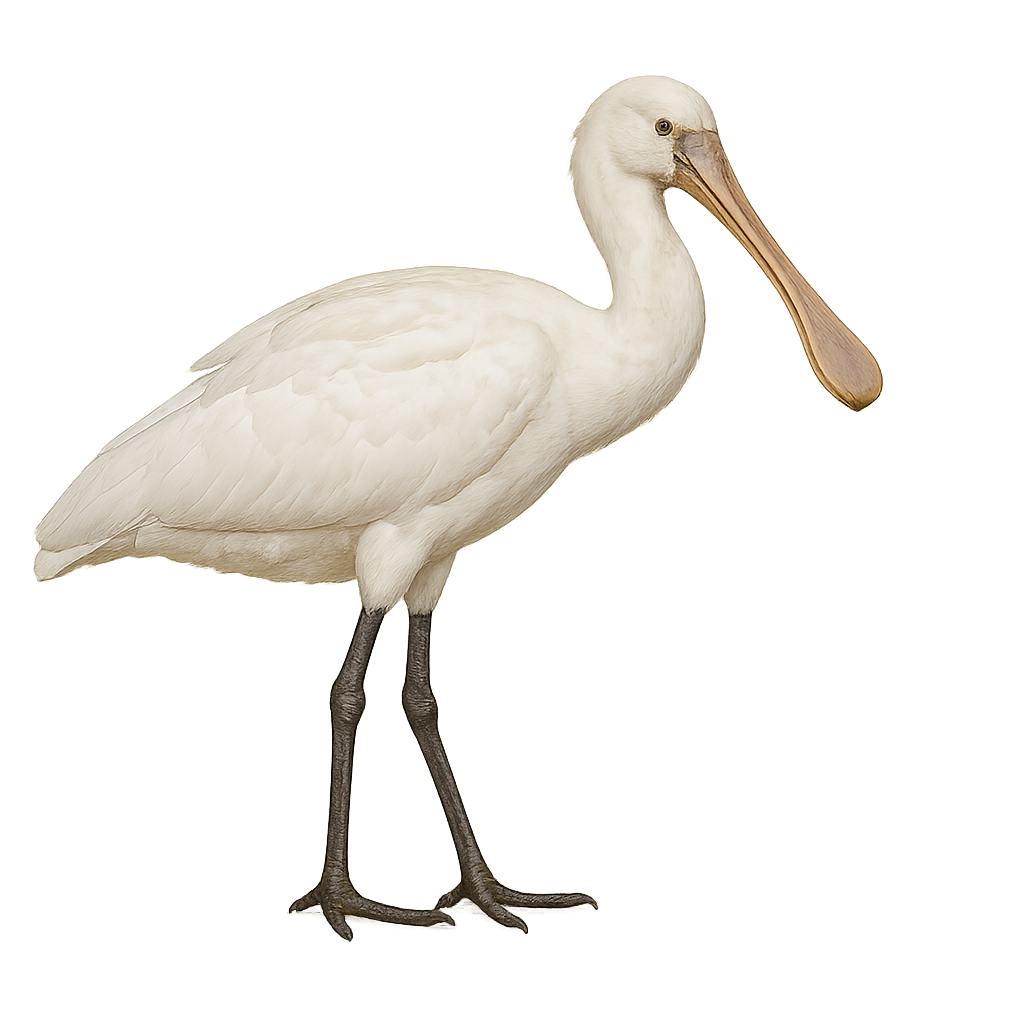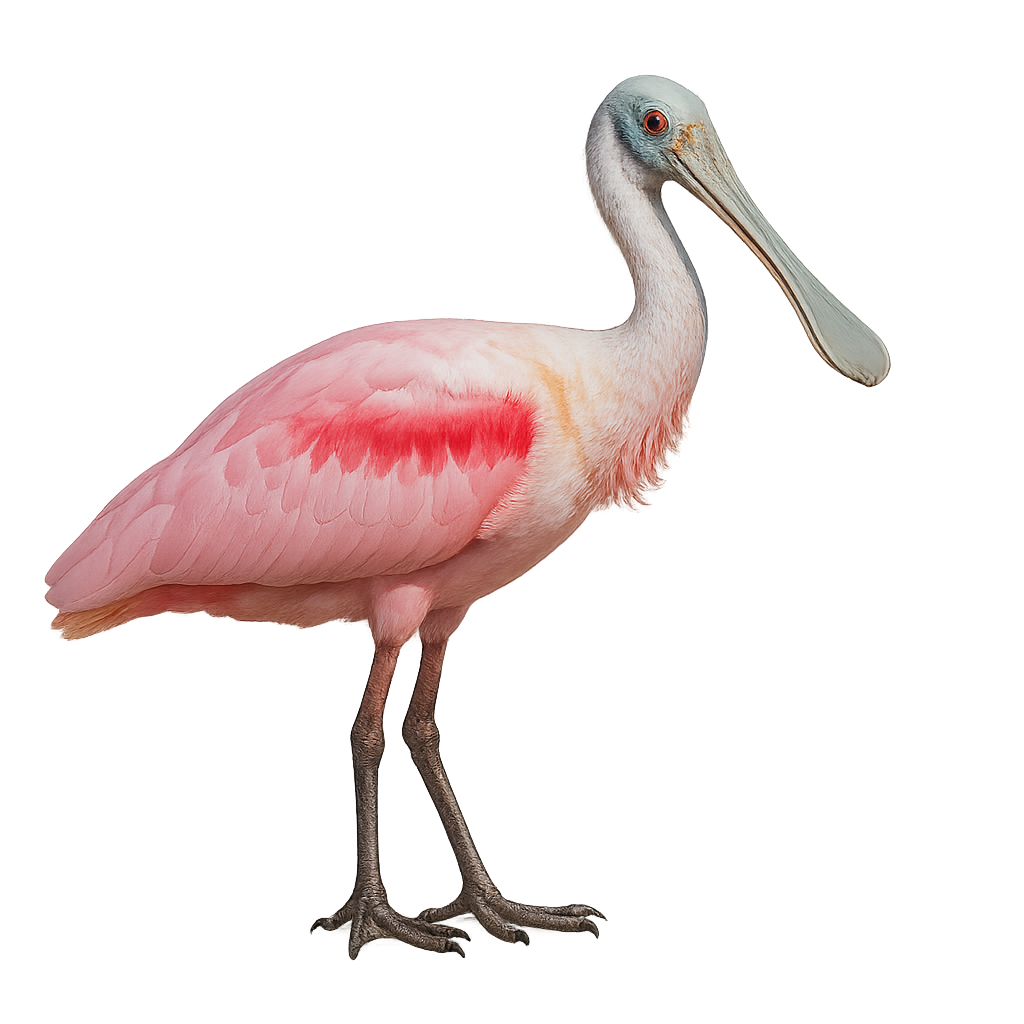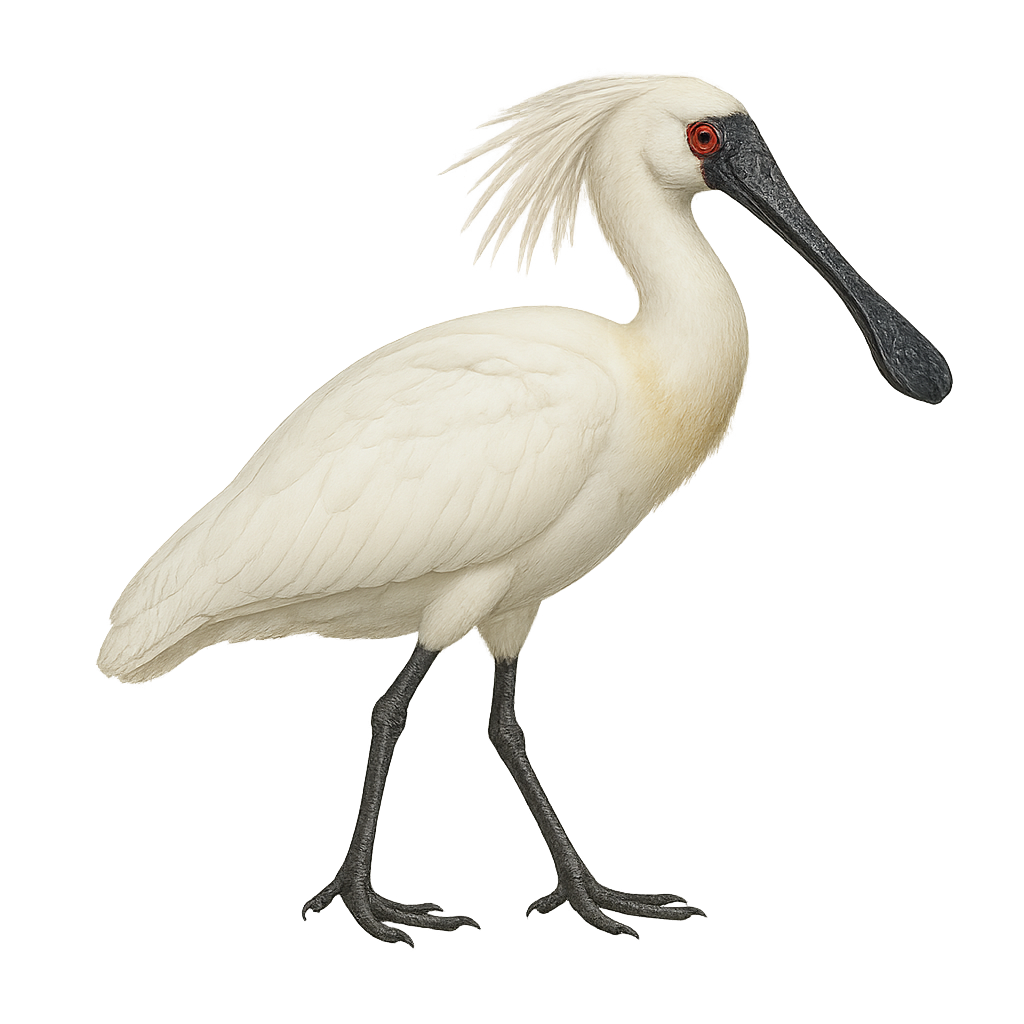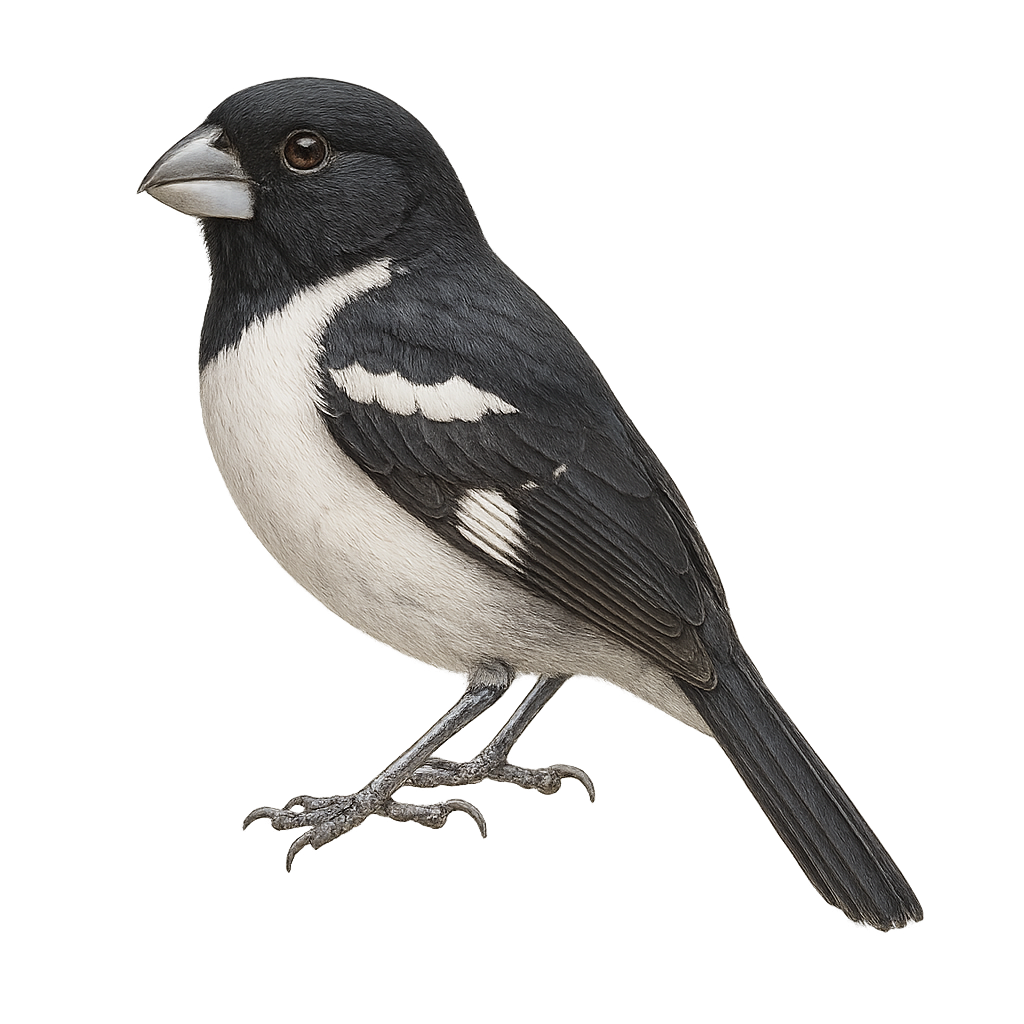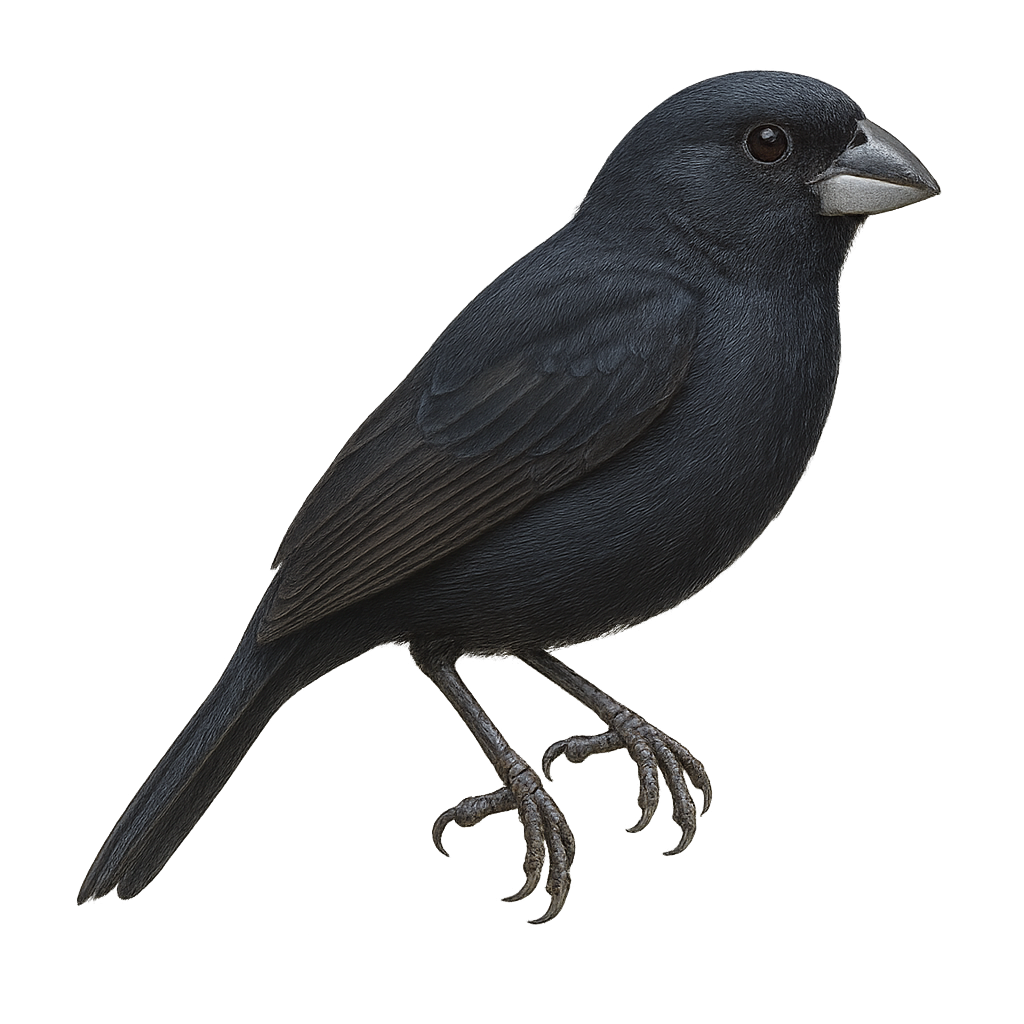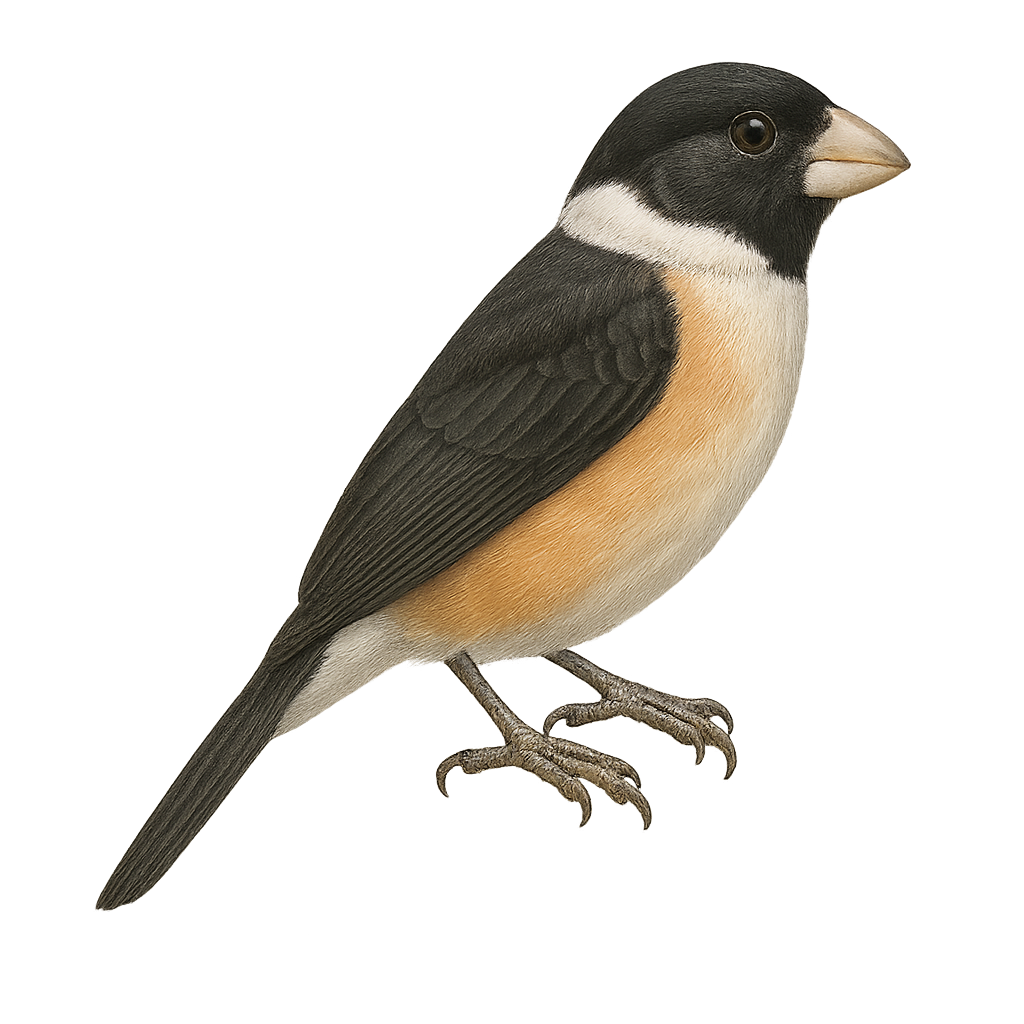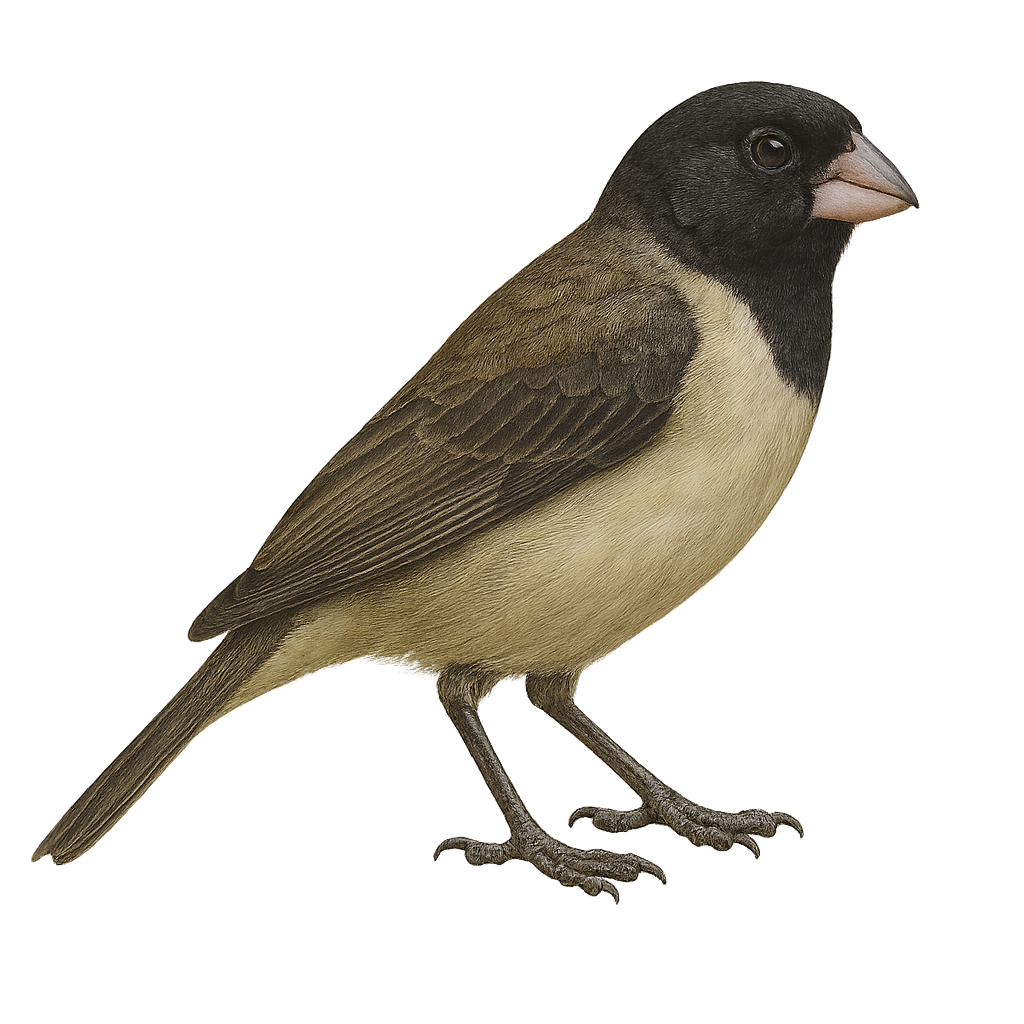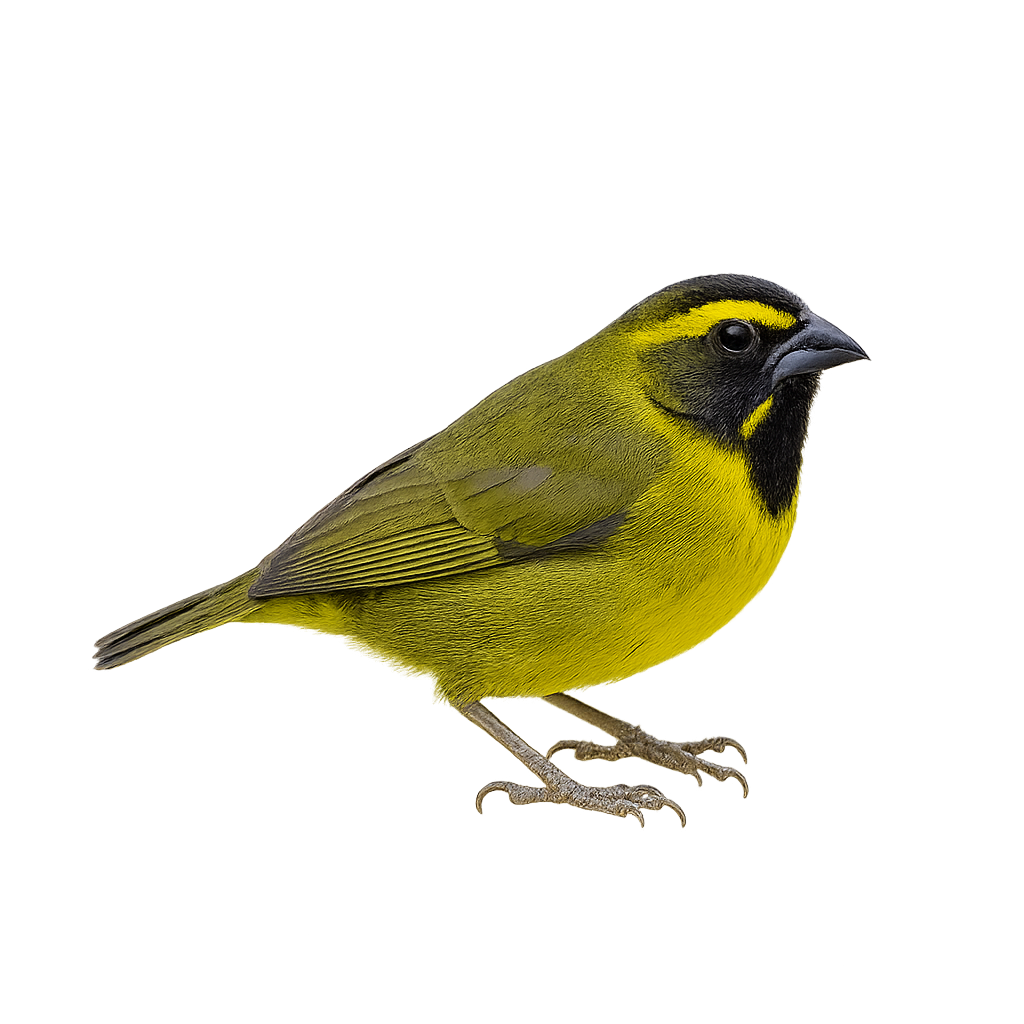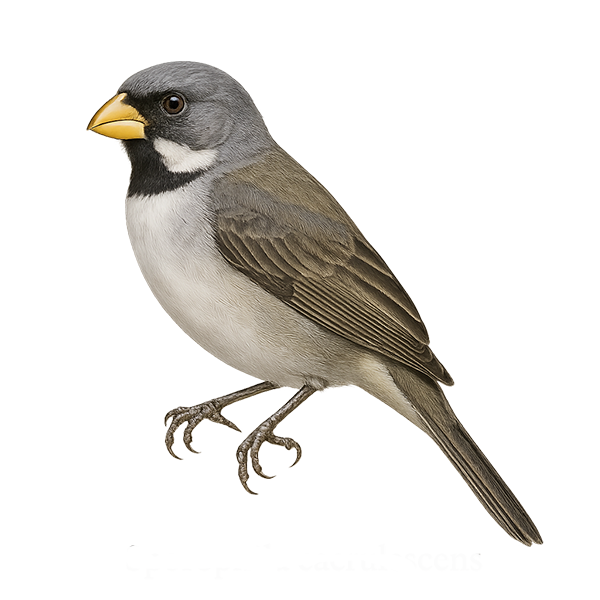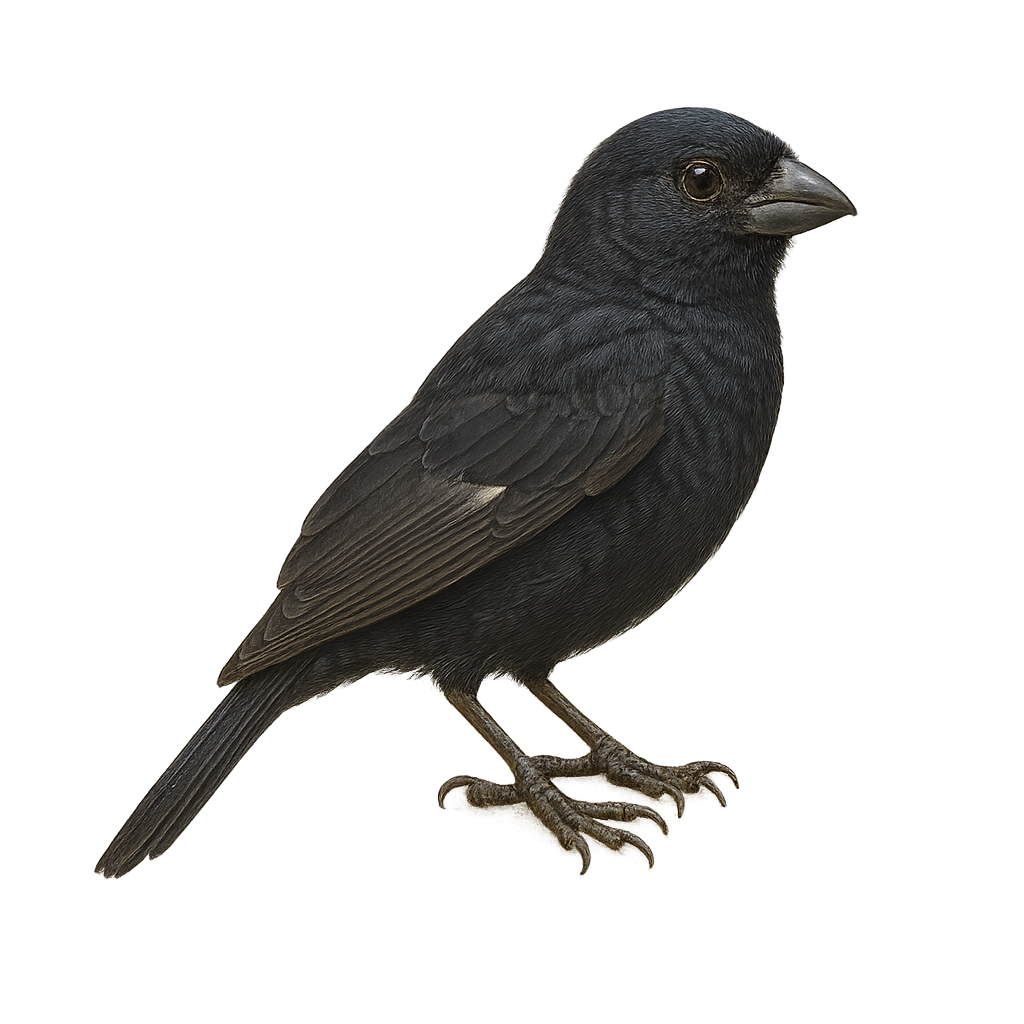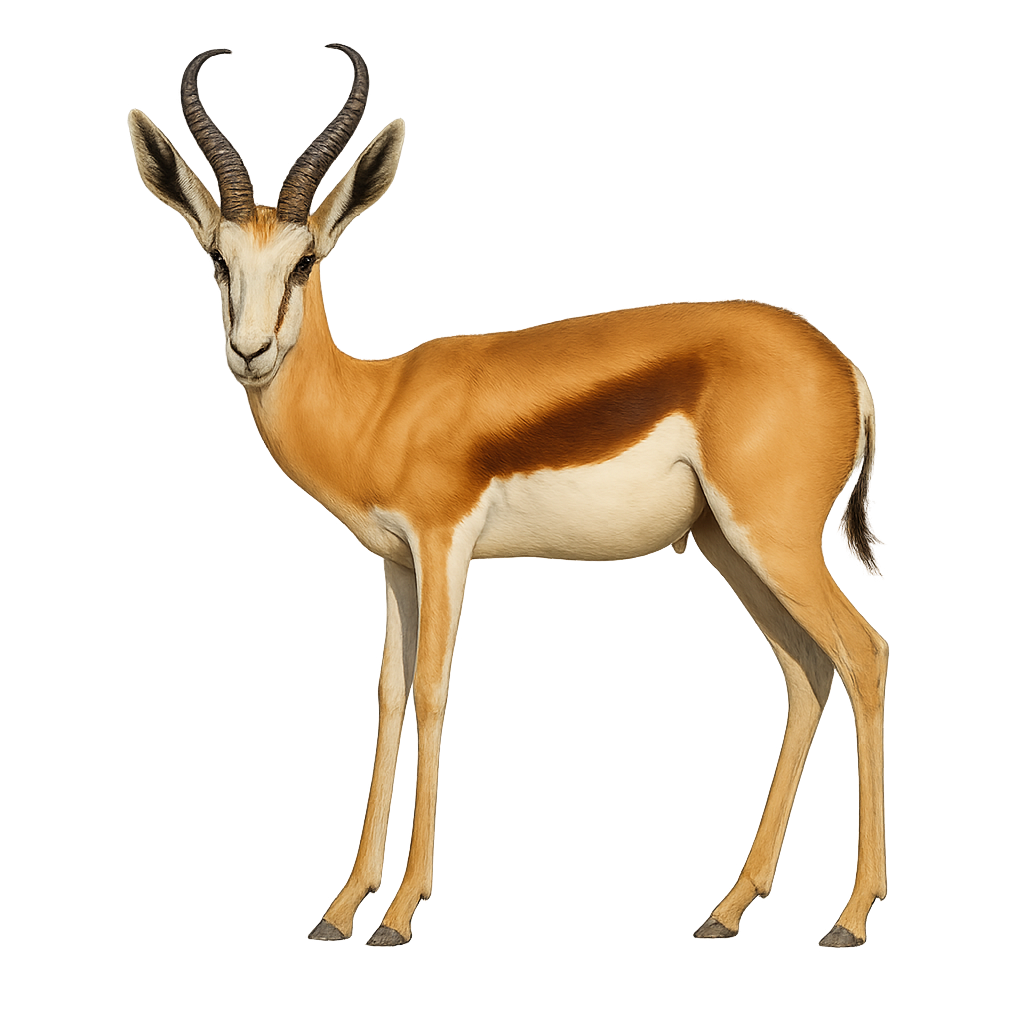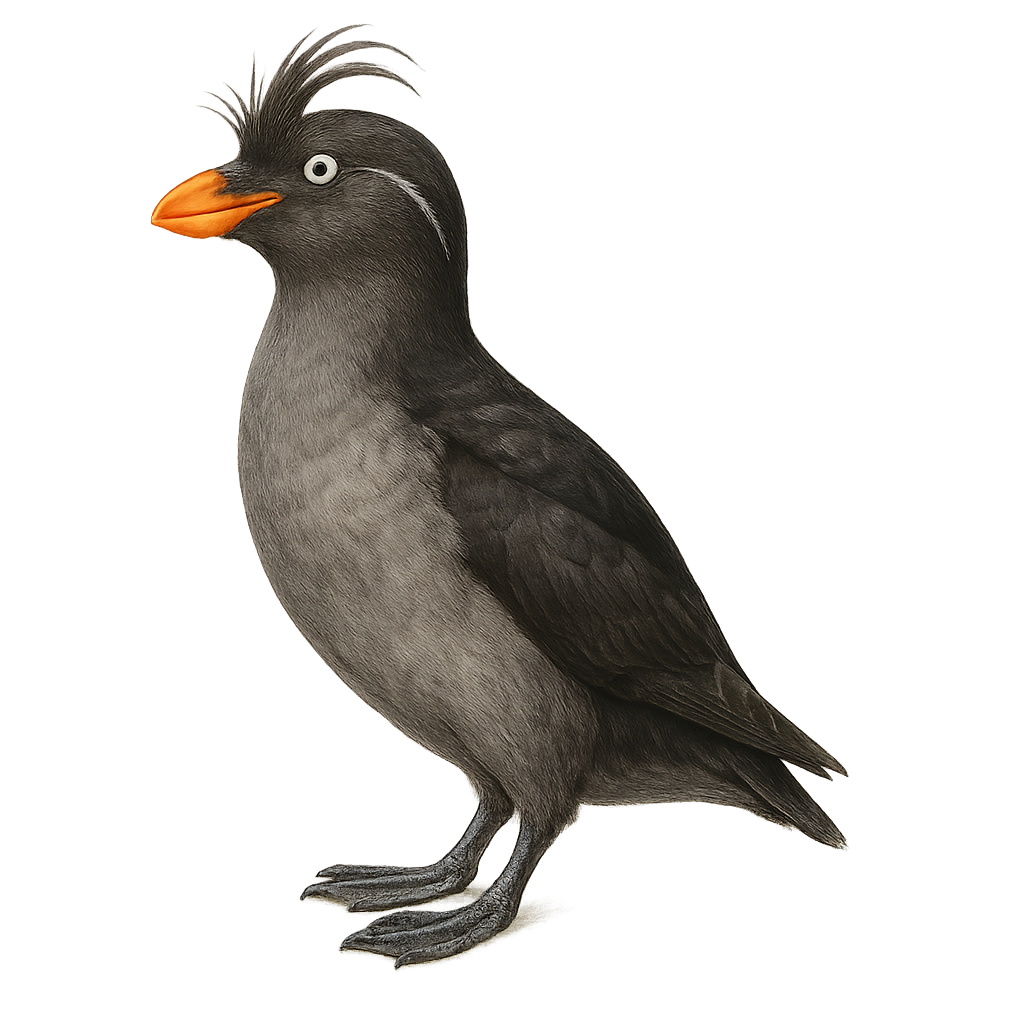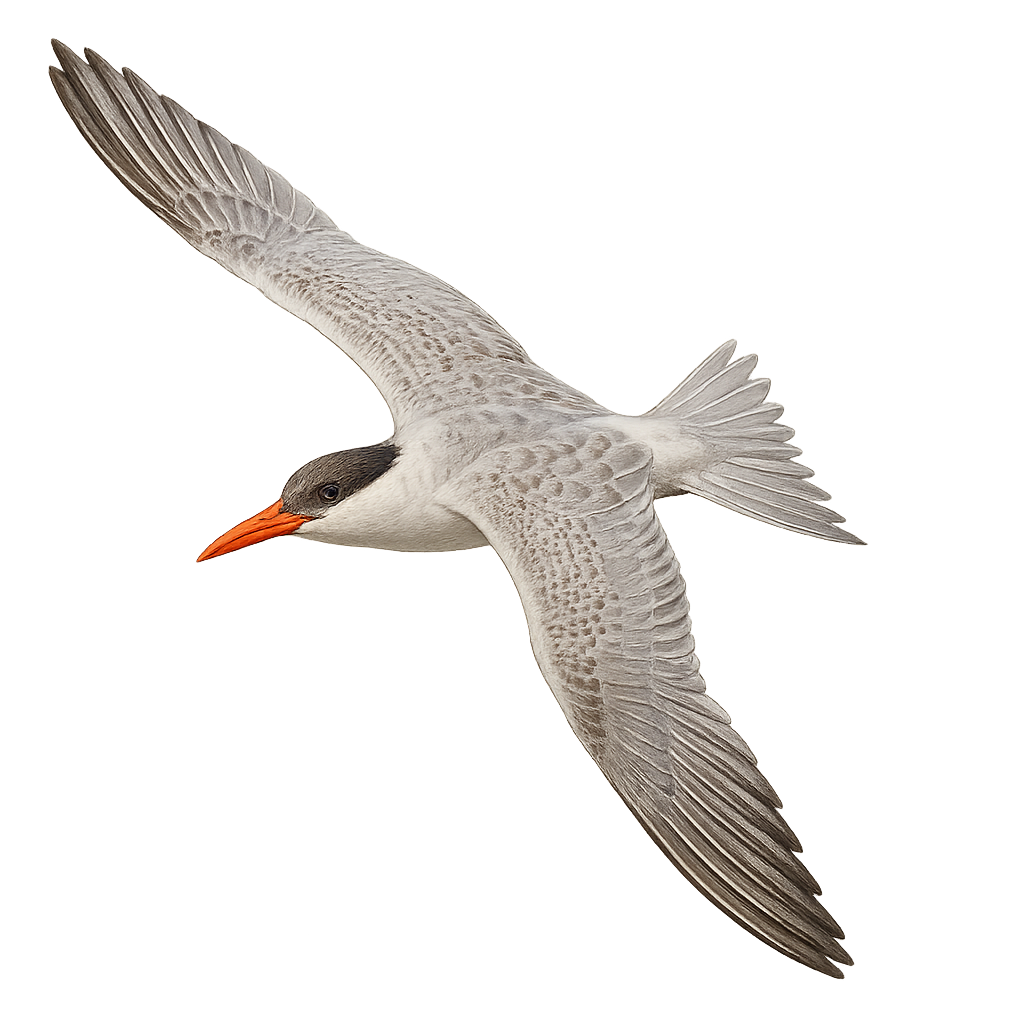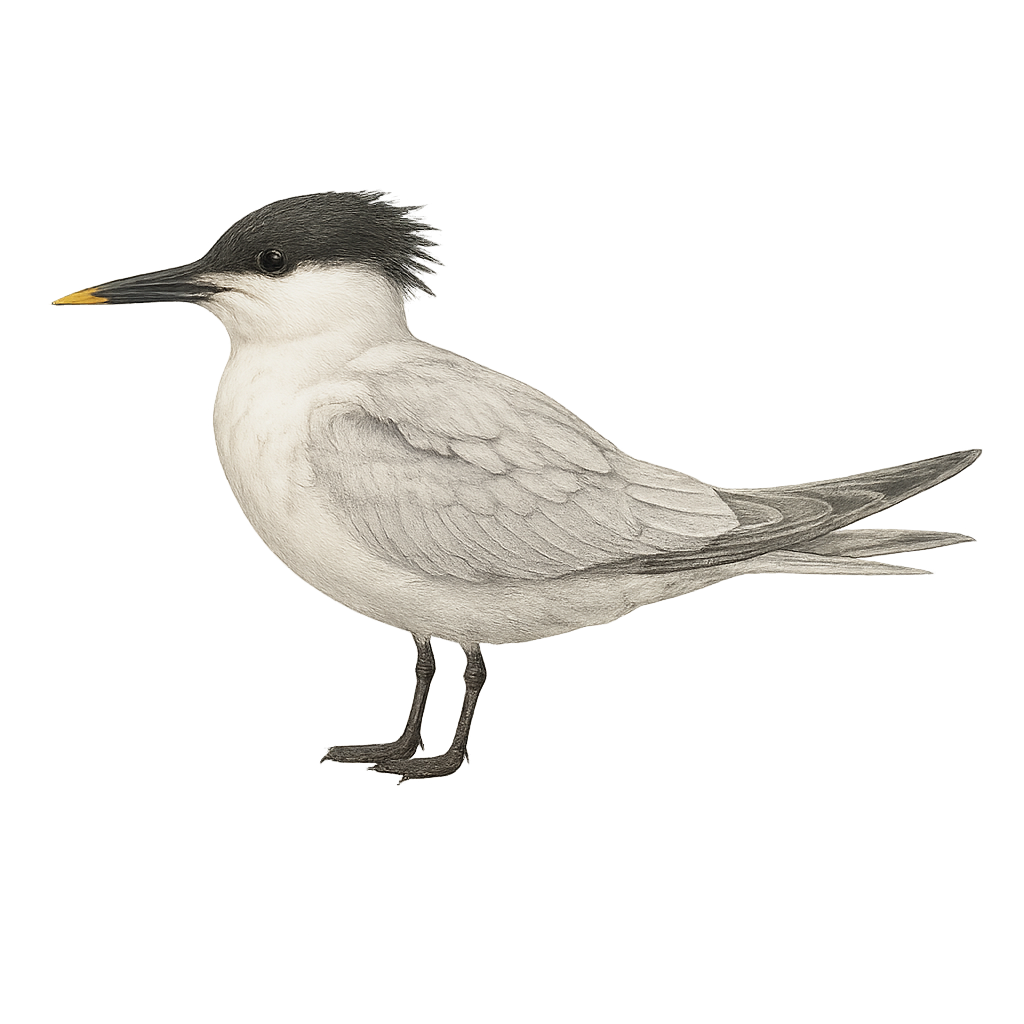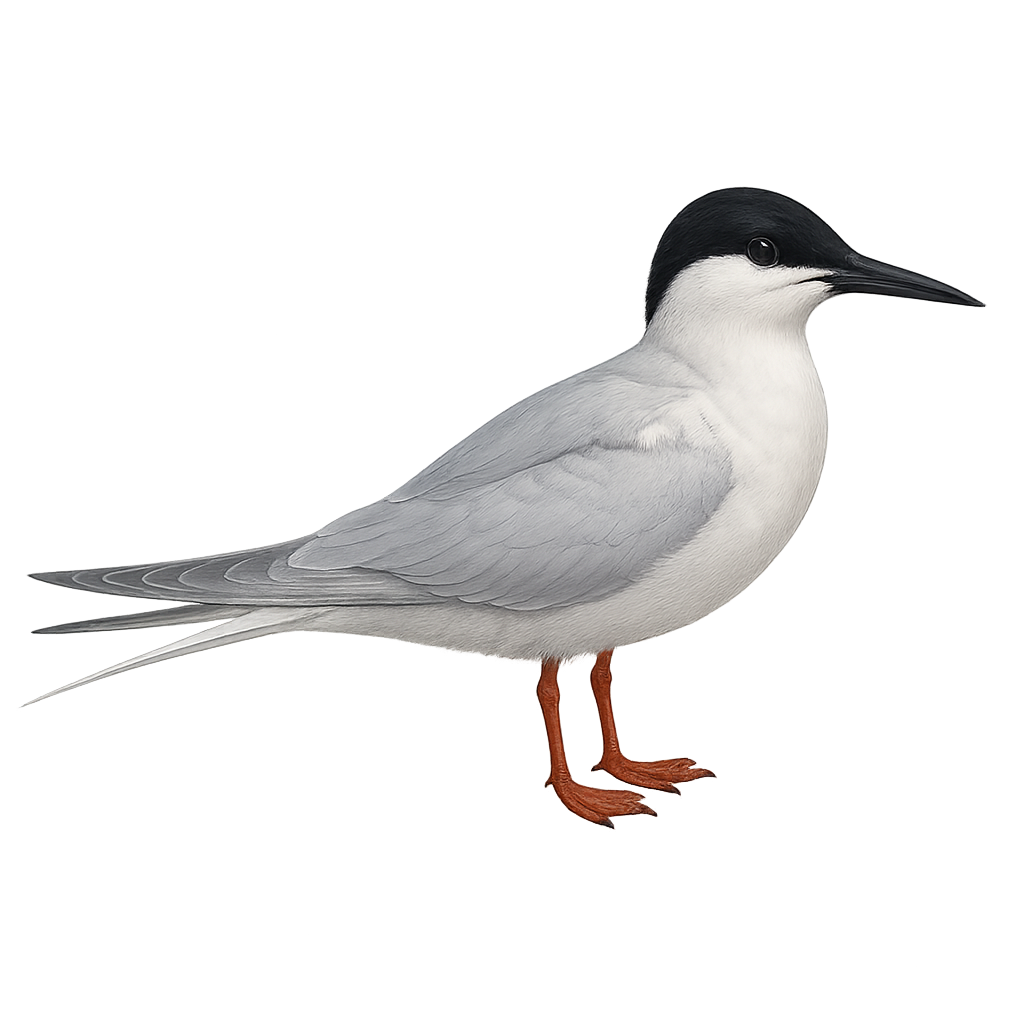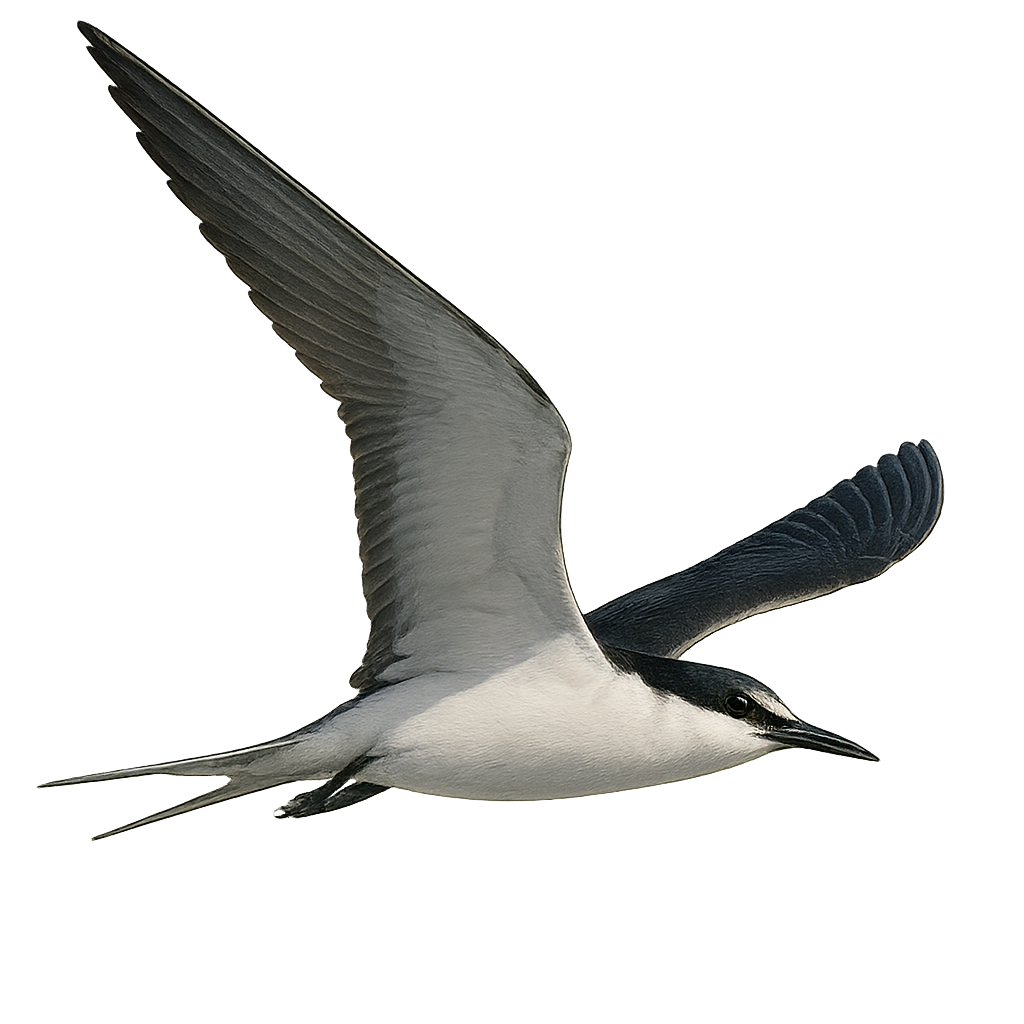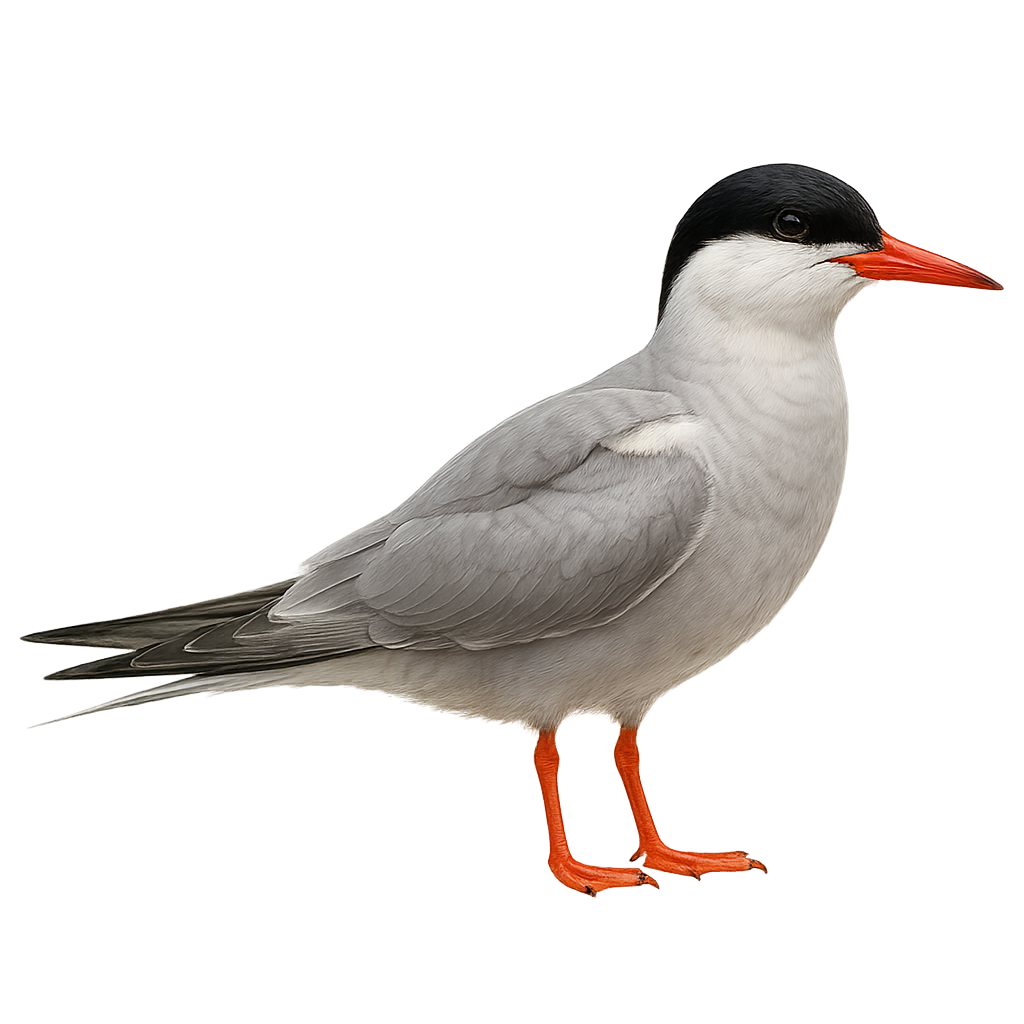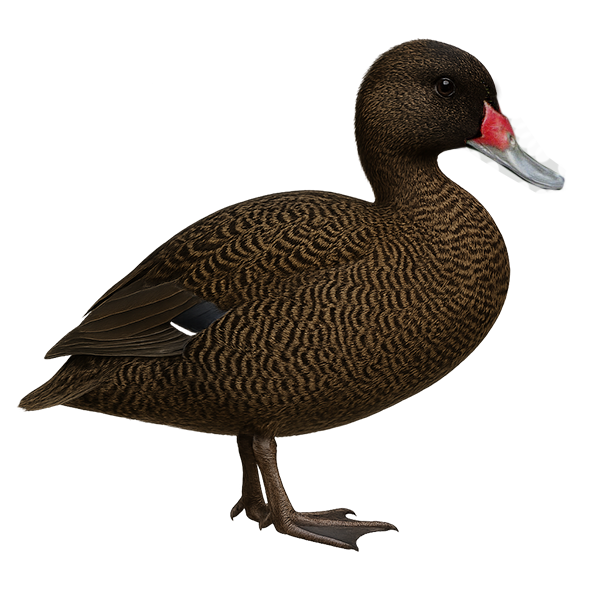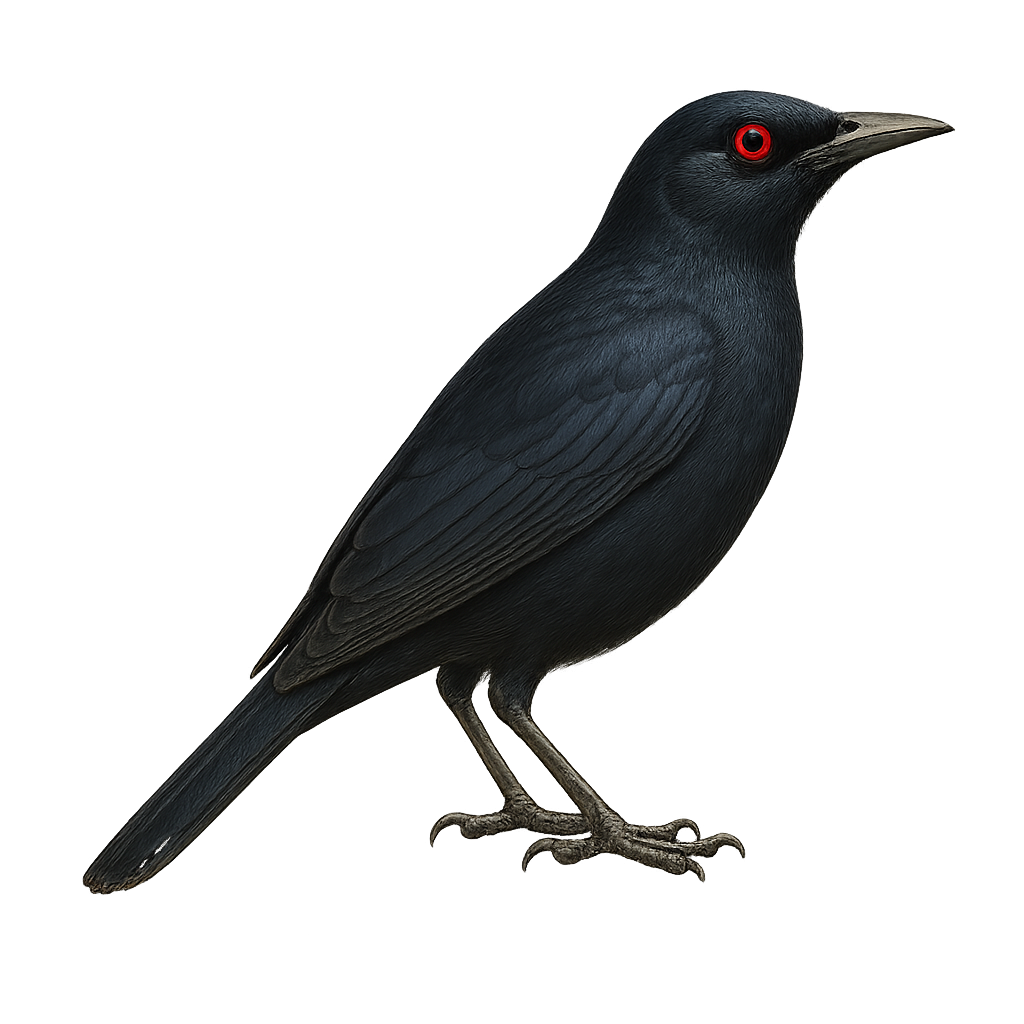The Crimson Sunbird, Leptocoma minima, is a small, vibrantly colored bird belonging to the Nectariniidae family. It is primarily found in tropical and subtropical moist forests, as well as in shrublands and gardens. This bird is distinguished by its striking plumage, featuring metallic shades of red, green, and blue. Males often display brighter colors than females, who are generally duller. The Crimson Sunbird primarily feeds on nectar but also consumes insects to supplement its diet. It plays a crucial role in pollinating flowers, thus contributing to the biodiversity of its habitat.
The Regal Sunbird, Cinnyris regius, is a small African hummingbird-like bird known for its vibrant colors. The male displays a dazzling plumage with shades of metallic green, blue, and red, while the female is more subdued with brown and green tones. This nectarivore is commonly found in tropical and subtropical forests, feeding primarily on nectar, but also on insects and spiders. Its slender, curved beak is perfectly adapted to reach the nectar of flowers. The Regal Sunbird is an active and agile bird, often seen flitting from flower to flower, playing a crucial role in the pollination of plants in its habitat.
The Tacazze Sunbird is a bird from the Nectariniidae family, mainly found in the mountainous regions of East Africa. It is easily recognizable by its iridescent plumage, which ranges from metallic green to deep purple, depending on the light angle. Males display brighter colors than females, who are generally duller. This bird primarily feeds on nectar but supplements its diet with insects and spiders. It is often seen in gardens, forests, and wooded areas, using its long curved beak to access flowers. The Tacazze Sunbird is a diurnal bird, active mainly in the morning and late afternoon.
The yellow-necked mouse, Apodemus flavicollis, is a small rodent belonging to the Muridae family. It is characterized by a distinctive yellow band around its neck, contrasting with its reddish-brown back and white belly. Primarily nocturnal, it inhabits forests, hedgerows, and sometimes gardens. Its diet includes seeds, fruits, and insects. Agile and fast, it can evade predators effectively. It reproduces several times a year, with litters of 4 to 7 young. Although common, it plays a crucial role in the ecosystem by dispersing seeds and controlling insect populations.
The Yellow-billed Spoonbill, Platalea flavipes, is a medium-sized aquatic bird known for its long, flat, yellow bill. It has a striking white plumage, sometimes tinged with pink during the breeding season. This bird is primarily found in Australia, where it inhabits wetlands, marshes, and lake edges. The Yellow-billed Spoonbill feeds mainly on small fish, aquatic insects, and crustaceans, which it captures by sweeping its bill through the water. It is often seen in small groups but can also be solitary. Although its habitat is threatened by wetland degradation, it is currently classified as of least concern by the IUCN.
The Eurasian Spoonbill is a medium-sized bird primarily found in wetlands across Europe, Asia, and North Africa. It measures about 80 to 95 cm in length, with a wingspan of 120 to 130 cm, and weighs between 1.5 and 2.5 kg. Its plumage is predominantly white, with a long spoon-shaped bill that allows it to forage in shallow waters, primarily feeding on aquatic invertebrates, small fish, and crustaceans. The Eurasian Spoonbill is often seen in groups, feeding in marshes, rice fields, or estuaries. It is migratory, moving to warmer regions during the winter. While its population remains stable in certain areas, the Eurasian Spoonbill faces threats related to habitat loss, water pollution, and urbanization.
The African Spoonbill, or Platalea alba, is a striking wading bird known for its spoon-shaped bill, which it uses to sift through water for food. It boasts a bright white plumage that contrasts with its reddish legs and bill. This bird is primarily found in the wetlands of sub-Saharan Africa, frequenting marshes, lakes, and rivers. The African Spoonbill is a gregarious bird, often seen in groups, and feeds mainly on small fish, crustaceans, and aquatic insects. Its breeding season varies by region but is generally tied to the rainy season when food resources are plentiful.
The Roseate Spoonbill is a large wading bird with striking pink plumage, measuring between 71 and 86 cm in length and a wingspan of 120 to 135 cm. Its long, spatula-shaped bill is used to sweep shallow waters side to side in search of prey. Adults have a greenish bare head, white neck and back, and vivid pink wings with carmine highlights. Juveniles are paler, with a feathered head and lighter pink plumage. This species feeds primarily on small fish, crustaceans, and aquatic insects, captured by filtering mud in wetlands. It inhabits coastal marshes, mangroves, lagoons, and estuaries from the southern United States to South America. Although listed as Least Concern by the IUCN, the Roseate Spoonbill remains vulnerable to habitat degradation, particularly due to pollution and loss of wetlands.
The Royal Spoonbill, Platalea regia, is an elegant waterbird known for its pristine white plumage and distinctive spoon-shaped bill. It primarily inhabits wetlands in Australia, New Zealand, and some Pacific islands. This bird feeds mainly on small fish, crustaceans, and aquatic insects, which it captures by sweeping its bill through the water. The Royal Spoonbill is often seen in small groups, especially during the breeding season. It builds its nest in trees or shrubs near water. Although its conservation status is currently "Least Concern," habitat destruction remains a potential threat.
The Chestnut-bellied Seedeater, or Sporophila bouvreuil, is a small passerine bird belonging to the Thraupidae family. This seedeater is primarily found in South America, particularly in Brazil, Bolivia, and Argentina. It is easily recognizable by its distinctive plumage: males have a chestnut-brown belly and chest, contrasting with a dark gray back and head, while females display duller and more uniform tones. These birds typically inhabit open areas such as grasslands and savannas, where they primarily feed on seeds. Their melodious song is often heard during the breeding season, a time when they become more territorial.
The Wing-barred Seedeater, or Sporophila americana, is a small passerine bird belonging to the Thraupidae family. It is primarily found in the Neotropical regions, especially in Central and South America. This bird is characterized by its subtle plumage, often grayish with lighter shades on the belly. Males sometimes display more pronounced patterns, including white wing bars. The Wing-barred Seedeater inhabits various environments, from open forests to agricultural areas, savannas, and marshes. It mainly feeds on seeds but can also consume insects. Its song is melodious yet discreet, often heard at dawn.
The Slate-colored Seedeater, or Sporophila funerea, is a small seed-eating bird found primarily in Central America, particularly in Costa Rica and Panama. Its plumage is mostly slate-colored, with lighter shades on the belly. Males and females exhibit sexual dimorphism, with females having browner tones. This bird prefers open habitats such as grasslands and agricultural areas, where it primarily feeds on seeds. It is often seen in small groups, especially outside the breeding season. Although its song is subtle, it plays an important role in communication between individuals.
The White-collared Seedeater, or Sporophila torqueola, is a small passerine bird belonging to the Thraupidae family. It is primarily found in the tropical and subtropical regions of Central America, particularly in Mexico and Guatemala. This bird is known for its contrasting plumage: males have a distinctive white collar around their necks, while females exhibit more subdued, often brownish tones. The White-collared Seedeater inhabits open areas such as grasslands, cultivated fields, and forest edges. It primarily feeds on seeds but can also consume insects. Its melodious song is often heard at dawn and dusk, making it a favorite among birdwatchers.
The Yellow-bellied Seedeater is a small passerine bird belonging to the Thraupidae family. It is primarily found in Central and South America, inhabiting open areas such as grasslands, cultivated fields, and forest edges. This bird is notable for its contrasting plumage: the male has a brown back, bright yellow belly, and distinctive black throat, while the female displays duller tones. The Yellow-bellied Seedeater is granivorous, mainly feeding on seeds, but it can also consume small insects. Its song is melodious and varied, making it easily identifiable. Although often solitary, it can form small groups outside the breeding season.
The Yellow-faced Grassquit, or Tiaris olivaceus, is a small granivorous bird found mainly in the tropical and subtropical regions of the Americas. It is easily recognizable by its olive-green plumage and bright yellow facial mask, which contrasts with its duller body. This passerine measures about 11 cm in length and weighs between 8 and 10 grams. It primarily inhabits grasslands, savannas, and shrublands, where it feeds on seeds and insects. The Yellow-faced Grassquit is a social bird, often observed in small groups. Its song is a soft and melodious trill, used to mark its territory and attract mates. Although not threatened, deforestation and habitat loss can affect its local populations.
The Double-collared Seedeater is a small passerine bird belonging to the Thraupidae family. It is primarily found in South America, particularly in Brazil, Argentina, Paraguay, and Uruguay. Its plumage is generally gray with lighter shades on the belly and a darker cap. Males and females exhibit sexual dimorphism, with males often displaying brighter colors. This bird inhabits various environments, from open forests to agricultural areas and urban gardens. It primarily feeds on seeds but can also consume insects. The Double-collared Seedeater is known for its melodious song and its ability to adapt to different environments.
The Variable Seedeater, or Sporophila corvina, is a small passerine bird belonging to the Thraupidae family. This charming bird is primarily found in Central America, from southern Mexico to western Panama. It is easily recognizable by its distinctive black and white plumage, with a black belly in males, while females display more brownish hues. This passerine frequents various habitats, from tropical forests to open agricultural areas. It is often seen feeding on seeds and insects, making it an important player in seed dispersal. Although generally tolerant of human presence, it can be suspicious in disturbed environments.
The Painted Poison Frog, Ameerega picta, is a brightly colored frog species belonging to the Dendrobatidae family. It is primarily found in the humid tropical forests of South America, particularly in Brazil, Guyana, and Suriname. This frog is distinguished by its vibrant skin, often adorned with black and yellow or red patterns, allowing it to blend effectively into its natural environment. It is diurnal and primarily feeds on small insects. Although its coloration serves as a warning to potential predators, it is not as toxic as some other species in its family. The Spot‑legged poison frog plays an important role in the ecosystem by regulating insect populations and serving as prey for other animals.
The Springbok is a small antelope found primarily in the savannas and grasslands of South Africa, Namibia, and Botswana. It typically stands about 75 cm at the shoulder, with a body length of 1.10 to 1.30 meters, and weighs between 30 and 40 kg. Its coat is primarily white and brown, with a dark line running along its back and a large white patch on its sides. What sets the Springbok apart is its ability to perform characteristic jumps, known as "pronking," where the animal leaps into the air with its legs extended, often to signal danger or to impress another individual. The Springbok is herbivorous, feeding primarily on grass and leaves. While it remains relatively abundant in its habitat, it is sometimes threatened by hunting and habitat loss.
The Crested Auklet, Aethia cristatella, is a small seabird belonging to the Alcidae family, easily identifiable by its distinctive crest and dark gray plumage. It measures about 25 cm in length and weighs between 250 and 300 grams. Its bright orange bill and white-ringed eyes add to its unique appearance. This bird is primarily found in the subarctic regions of the North Pacific, particularly around the Aleutian Islands and the coasts of eastern Russia. It feeds mainly on zooplankton, small crustaceans, and fish. The Crested Auklet is an excellent diver, capable of descending several tens of meters underwater to hunt. It nests in dense colonies on rocky cliffs, laying a single egg per season.
The Céphalophe de Grimm is a small antelope found primarily in dry regions and open savannas of sub-Saharan Africa, particularly in countries such as South Africa, Botswana, and Namibia. It typically stands about 45 to 60 cm at the shoulder, with a body length of 80 to 100 cm, and weighs between 8 and 15 kg. Its coat is generally fawn to light brown, with white markings on its legs and around its eyes. The Céphalophe de Grimm has small horns in males, but they are generally more discreet than those of other antelope species. This small herbivore feeds primarily on grasses, fruits, and leaves. It is known for its ability to hide in dense vegetation and escape quickly from predators. While its population remains relatively stable, the Céphalophe de Grimm is sometimes threatened by habitat loss and hunting.
The Arctic Tern is a migratory bird species primarily found in coastal regions of the Arctic during the summer, and in tropical and subtropical areas during the winter. It measures about 35 to 40 cm in length, with a wingspan of 80 to 100 cm, and weighs between 90 and 130 g. Its plumage is mostly white with gray tones on the back and wings, and its head is black with a distinctive black band around the eyes. The Arctic Tern is famous for its impressive migrations, traveling thousands of kilometers between its breeding sites in the Arctic and its wintering grounds in Africa, Southeast Asia, and Australia. It primarily feeds on fish and marine invertebrates, which it catches by diving into the water. While its population remains stable, the Arctic Tern is threatened by habitat loss, human disturbances, and climate change.
The Caspian Tern, Hydroprogne caspia, is the largest tern species, easily identified by its bright red bill and black cap. It inhabits coasts, lakes, and rivers, feeding mainly on fish caught through agile diving. Its flight is strong and direct, often accompanied by harsh calls. It nests in colonies on islands or sandy beaches, typically laying two to three eggs. Although widespread, it is sensitive to human disturbance and habitat degradation. Its population is stable but remains vulnerable to environmental changes.
The Sandwich Tern, Sterna sandvicensis, is an elegant seabird known for its white plumage, black cap, and black bill with a yellow tip. It inhabits European and African coasts, nesting in colonies on beaches, islands, and lagoons. It primarily feeds on fish, which it catches by skillfully diving. As a migratory bird, it travels long distances between breeding sites and wintering grounds. The Sandwich Tern is an indicator of coastal ecosystem health, and its conservation is vital in the face of threats like pollution and human disturbance.
The Roseate Tern is an elegant seabird, recognizable by its pure white plumage, graceful wings, and black bill with a red tip. It frequents coasts and islands, often nesting in colonies on sandy beaches or rocky islets. Its flight is agile and fast, often punctuated by spectacular dives to catch fish at the water's surface. A migratory bird, it travels long distances between its breeding sites in Europe and its wintering grounds in Africa or South America. The Roseate Tern is a protected species, as it is vulnerable to human disturbances and predation by introduced species.
The Sooty Tern, or Onychoprion fuscatus, is a medium-sized tern known for its striking black and white plumage. Its upper parts are predominantly black, while the underparts are white, creating a sharp contrast. The black, slender bill is well-suited for its diet of fish and squid. Sooty Terns are gregarious seabirds, often seen in large flocks, especially during the breeding season. They nest mainly on tropical and subtropical islands, forming extensive colonies. Their flight is swift and agile, characterized by rapid wing beats and graceful glides. Although they spend most of their lives at sea, they return to land to breed, typically laying a single egg per season.
The common tern is an elegant seabird easily recognized by its white plumage, light gray back, and bright red beak. It is primarily found along the coasts of Europe, Asia, and North Africa, often near estuaries and rivers. This bird is an excellent fisher, diving with precision into the water to catch fish. The common tern is also known for its swift and graceful flights.
The Royal Tern, or Thalasseus maximus, is an elegant seabird known for its large size and striking white plumage, contrasted by a black cap on its head. Its bright orange bill and long, slender wings give it a majestic appearance in flight. It primarily inhabits Atlantic coasts and estuaries, feeding on fish caught with precision diving. Sociable by nature, it nests in dense colonies on sandy islets or isolated beaches. Although its conservation status is currently "least concern," it remains sensitive to human disturbances and habitat degradation.
The Freckled Duck, Stictonetta naevosa, is a waterfowl species endemic to Australia. Recognizable by its brown plumage speckled with white, it has a stocky build and a broad, flat bill. Males and females are similar, although males display a reddish bill during the breeding season. This duck prefers freshwater habitats such as lakes, marshes, and rivers, where it feeds mainly on aquatic plants and invertebrates. Although generally discreet, it can form small groups outside the breeding season. Its conservation status is concerning due to habitat loss and climate change, though it is not yet considered threatened.
The Micronesian Starling, or Aplonis pelzelni, is a bird endemic to the Micronesian islands. This medium-sized passerine features a glossy black plumage with metallic sheens, making it particularly attractive to observe. It is often seen in small groups, feeding mainly on fruits, insects, and nectar. Its song is melodious and varied, contributing to the soundscape of the tropical forests it inhabits. Although relatively tolerant of human presence, its population is threatened by deforestation and the introduction of invasive species. Conservation efforts are crucial to preserving this unique bird and its natural habitat.


